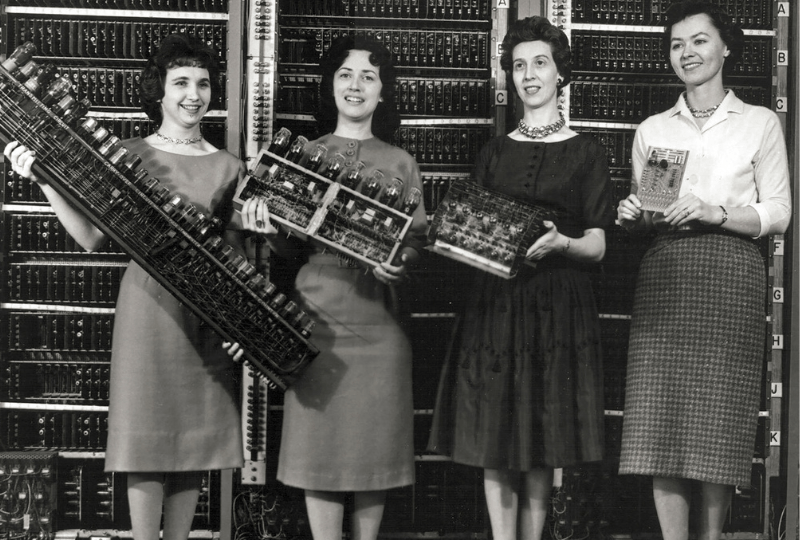
Although women are increasingly choosing to work in IT, the statistics are still inexorable. According to a report by the ‘Carrots Foundation’, women account for only 30% of the IT industry, and it does not look like this trend will change any time soon.
Yet it was women who laid the foundations for the current shape of technology and made the discoveries that still influence the IT world today. For this reason, we have compiled a list of women who have had a significant impact on the development of the IT industry and who, through their stories, inspire and show that technology is not an exclusively male domain.
Women in IT – the most famous names and their achievements
Computer science is a scientific discipline that is probably associated by most of us as one that has basically always been dominated by men. There is nothing surprising in such a perception, as this is indeed the case, as confirmed by cyclical studies conducted all over the world. Women in IT, although relatively few in number, nevertheless play very important roles in some cases. There is no shortage of female software authors, engineers or game developers among them, although the popularity of their names certainly remains incomparably lower than that of Steve Jobs or Bill Gates. In order to change this, today we have decided to remind you of the most important – in our opinion – women who, thanks to their achievements, have made a name for themselves in the world of IT, in some cases significantly influencing its development. At the same time, we hope that, as a result, in some time we will be able to present again other well-known women in IT and their achievements, confirming the thesis that gender does not matter much when it comes to the ability to perform complex operations using computers and increasingly advanced technologies. So, if you are a woman and have so far wondered whether you should tie your career and future to IT, having an aptitude for it, the profiles below should allow you to effectively dispel your doubts.
Women have played an important role in the field of computing and information technology, developing some of the most important elements of modern IT.
Meet 16 exceptional women who changed the history of the IT industry once and for all.
![]() Ada Lovelace – pioneer of programming
Ada Lovelace – pioneer of programming
 London-born Lady Ada Lovelace (1815-1852), although the daughter of the poet Lord George Byron, had a passion and gift for mathematics from an early age.
London-born Lady Ada Lovelace (1815-1852), although the daughter of the poet Lord George Byron, had a passion and gift for mathematics from an early age.
She is recognized as the world’s first computer programmer because she developed a way in which a machine called an analytical engine could perform calculations. This machine, invented by her friend, mathematician and inventor Charles Babbage, is considered the first universal computer.
Lovelace created an algorithm that was soon recognized as the world’s first computer program, and it is still used in the creation of today’s applications.
![]() Edith Clarke – the first female engineer
Edith Clarke – the first female engineer
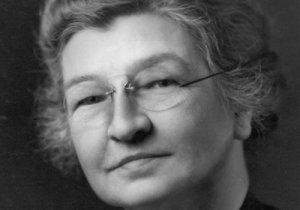 “I always wanted to be an engineer, but I thought women shouldn’t go into things like engineering studies.” – claimed Edith Clarke and…she was sorely mistaken, for a dozen years after that statement she became the world’s first ever female electrical engineer.
“I always wanted to be an engineer, but I thought women shouldn’t go into things like engineering studies.” – claimed Edith Clarke and…she was sorely mistaken, for a dozen years after that statement she became the world’s first ever female electrical engineer.
Edith Clarke received a small inheritance at the age of 18, which put her through Vassar College, then a sister institution of Yale; she graduated in 1908. She soon began working full-time as manager of the all-female ‘human computers’ team at AT&T.
Determined to further her career by doing what ‘women should not do’, she then enrolled at MIT and became the first woman of that institution to earn a master’s degree in electrical engineering. But even with her achievements to date, no technology company wanted to hire her as a female engineer. As a result, Clarke left the US to teach physics at the Women’s College in Istanbul. However, she did not give up on her dream of a career in engineering and returned to the US after a few years to work for General Electric, which allowed her to achieve her desired goal. At General Electric, Clarke created and patented The Clarke Calculator, a graphical device that solves equations used to transmit electricity over transmission lines longer than 250 meters. Her huge contribution to intercontinental telephone communications silenced the skeptics; in 1922, at the age of 38, Edith Clarke became the first professional electrical engineer.
![]() The ENIAC women: pioneers of computing
The ENIAC women: pioneers of computing
 In 1946, on the eve of its debut, the world’s first general purpose computer failed. As a result, seven women engineers were delegated to rescue the project and had one night to fix the device called ENIAC (Electronic Numerical Integrator And Computer), which was the ancestor of today’s computers. These women included:
In 1946, on the eve of its debut, the world’s first general purpose computer failed. As a result, seven women engineers were delegated to rescue the project and had one night to fix the device called ENIAC (Electronic Numerical Integrator And Computer), which was the ancestor of today’s computers. These women included:
![]() Betty Jean Jennings Bartik,
Betty Jean Jennings Bartik,
![]() Kathleen McNulty,
Kathleen McNulty,
![]() Mauchly Antonelli,
Mauchly Antonelli,
![]() Ruth Lichterman Teitelbaum,
Ruth Lichterman Teitelbaum,
![]() Frances Bilas Spence,
Frances Bilas Spence,
![]() Marlyn Wescoff Meltzer,
Marlyn Wescoff Meltzer,
![]() Frances Snyder Holberton.
Frances Snyder Holberton.
The system was neither small nor simple, weighing 30 tonnes and covering 140 square metres. It was equipped with 18,000 vacuum tubes, 70,000 resistors, 10,000 capacitors and 5 million hand-soldered connectors. Given its ability to calculate ballistic trajectories, the need for it to work was great – the US was then plunged deep into World War II.
Unfortunately, although the project succeeded, the ENIAC heroines, did not receive the recognition they deserved for quite some time. It was only in 1997 that they were inducted into the Women in Technology International (WITI) Hall of Fame. In 2014, Walter Isaacson, in his book Innovators, juxtaposed the ENIAC Seven with the likes of Steve Jobs and Nikola Tesla, and a few years ago, a documentary film entitled The Eniac Programmers Project was released, detailing how women came up with the way to program the machine.
![]() Grace Hooper – bug expert
Grace Hooper – bug expert
 American Grace Hopper (1906-1992) was an admiral in the US Navy and one of the first programmers of the Mark 1 mechatronic calculator, the prototype of today’s computers, used in World War II operations. She also created a 500-page textbook detailing the basic principles of computer machines. But this is not the end of her contribution to the IT industry.
American Grace Hopper (1906-1992) was an admiral in the US Navy and one of the first programmers of the Mark 1 mechatronic calculator, the prototype of today’s computers, used in World War II operations. She also created a 500-page textbook detailing the basic principles of computer machines. But this is not the end of her contribution to the IT industry.
Hopper and her team created the first ever computer compiler, which became the precursor to the COBOL (Common Business Oriented Language) programming language. It was not long before COBOL was to prove to be one of the most widely used languages in the world of IT, and although today some experts consider it to be obsolete, it is still being used.
Grace Hopper was the first to introduce the term ‘bug’, for bugs in code. It is related to an anecdote that a moth once flew into the hardware on which Hooper was working and caused a short circuit. Since then, Hopper has popularised the term ‘computer bug’ (bug in English is a bug), which refers to a computer program error.
![]() Margaret Hamilton – programming for NASA
Margaret Hamilton – programming for NASA
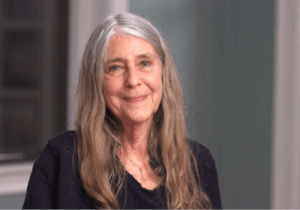 Margaret Hamilton is an American programmer, systems engineer and founder of two technology companies who spent years designing NASA systems.
Margaret Hamilton is an American programmer, systems engineer and founder of two technology companies who spent years designing NASA systems.
She was director of software engineering at the MIT Instrumentation Laboratory, which created the onboard flight software that enabled Neil Armstrong and Buzz Aldrin’s Apollo missions. On 22 November 2016, Hamilton received the Presidential Medal of Freedom from President Barack Obama for her work on NASA’s Apollo moon missions.
![]() Sister Mary Kenneth Keller – the first woman with a PhD in computer science
Sister Mary Kenneth Keller – the first woman with a PhD in computer science
 The first woman to receive a PhD in computer science was a nun: Mary Kenneth Keller entered the ‘Sisters of Charity’ in 1932, taking her vows in 1940. Keller earned a master’s degree in mathematics from DePaul University in Chicago and studied briefly at Dartmouth. There she was instrumental in developing a key computer language: a universal symbolic instruction code for beginners called BASIC.
The first woman to receive a PhD in computer science was a nun: Mary Kenneth Keller entered the ‘Sisters of Charity’ in 1932, taking her vows in 1940. Keller earned a master’s degree in mathematics from DePaul University in Chicago and studied briefly at Dartmouth. There she was instrumental in developing a key computer language: a universal symbolic instruction code for beginners called BASIC.
With BASIC, writing software was no longer restricted to mathematicians and scientists. Her contributions made computer use much more accessible to the wider population. Keller returned to the Midwest and earned a PhD from the University of Wisconsin in 1965, and then headed the computer science department at Clarke College in Iowa, where she worked for the next 20 years.
![]() Susan Kare – the Steve Jobs discovery
Susan Kare – the Steve Jobs discovery
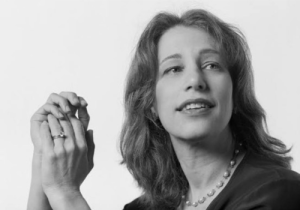 Although Susan Kare worked for Microsoft early in her career, her greatest achievements came when she worked with Steve Jobs at Apple.
Although Susan Kare worked for Microsoft early in her career, her greatest achievements came when she worked with Steve Jobs at Apple.
Kare dreamt of a career as an artist and, after finishing school, came to San Francisco to find her opportunity. A chance meeting with an old high school friend led to an interview for a job at Apple. Steve Jobs, inspired by Xerox’s graphical user interface (GUI), was looking for an artist to design Macintosh icons. Kare’s designs appealed to Jobs enough that he decided to work with her.
Using a block of millimetre paper, Kare therefore designed icons for the Mac that met three principles: they were simple, elegant and understandable. As part of her work at Apple, Susan also created the Chicago typeface, used on the first four generations of the iPod. Kare’s designs were even executed with Jobs’ obsessive and characteristic attention to detail, which incidentally still defines Apple today.
![]() Carol Shaw – Atari developer
Carol Shaw – Atari developer
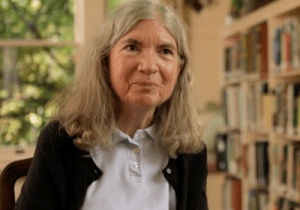 Carol Shaw was born and raised in Palo Alto, California. Although she excelled in mathematics from the start, it wasn’t until she inherited a model electric train from her brothers that Shaw started tinkering with electronics.
Carol Shaw was born and raised in Palo Alto, California. Although she excelled in mathematics from the start, it wasn’t until she inherited a model electric train from her brothers that Shaw started tinkering with electronics.
After graduating from Berkeley’s computer science graduate program, Shaw accepted a position at the Atari game company in the late 1970s. Wearing thick-rimmed glasses and an immortal flannel shirt, she began designing and programming video games. Shaw programmed one of Atari’s most famous shooters, River Raid, which was voted the best wargame of 1984, and Shaw’s work as a pioneering game designer made her a legend for two generations of gamers.
![]() Adele Goldberg – pioneer of the UI
Adele Goldberg – pioneer of the UI
 Without Adele Goldberg, the Apple desktop would look very different today. Working at Xerox Palo Alto Research Center (PARC), Adele was the only woman in the group that created Smalltalk-80, one of the most popular and influential early programming languages.
Without Adele Goldberg, the Apple desktop would look very different today. Working at Xerox Palo Alto Research Center (PARC), Adele was the only woman in the group that created Smalltalk-80, one of the most popular and influential early programming languages.
She also introduced Smalltalk to Steve Jobs, who implemented a lot of the language’s concepts in Apple’s first products.
Beyond Apple, many modern graphical user interfaces (GUIs) have design standards that relate directly to Goldberg’s original work.
![]() Radia Perlman – “Don’t call me the mother of the internet”.
Radia Perlman – “Don’t call me the mother of the internet”.
 Radia Perlman is considered by many to be the founder of the Internet, although she strongly denies this, insisting that “the Internet was not invented by one person”. What is certain, however, is that it was Perlman who created the algorithm behind the Spanning Tree Protocol (STP), which is a vital part of the foundations of the Internet.
Radia Perlman is considered by many to be the founder of the Internet, although she strongly denies this, insisting that “the Internet was not invented by one person”. What is certain, however, is that it was Perlman who created the algorithm behind the Spanning Tree Protocol (STP), which is a vital part of the foundations of the Internet.
Perlman was one of only a handful of women who began her research career at MIT, where she published her textbook Interconnection in 2000, greatly simplifying network routing and bridging. “My book created order,” she later said.
Despite her individual successes, notably the creation of the STP protocol, Perlman emphasises the importance of teamwork in technology development and does not want to focus solely on her achievements.
There are, of course, many more women who have made significant contributions to the development of technology, but we have selected profiles of these ten who, over the years, have proven that they can blaze trails in various areas of IT and are not afraid of the challenges of creating modern IT solutions. We wish all women who have aspirations to enter the IT industry not to hesitate and try their hand at it, following the example of the heroines of our article.

